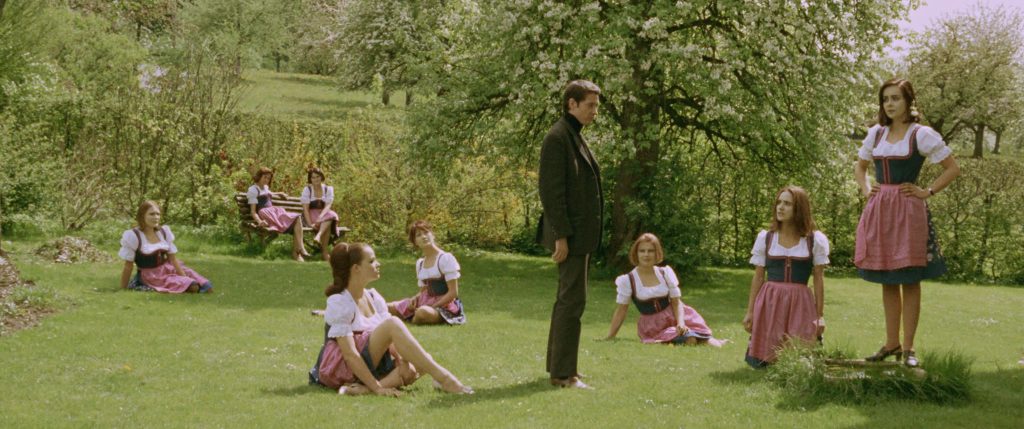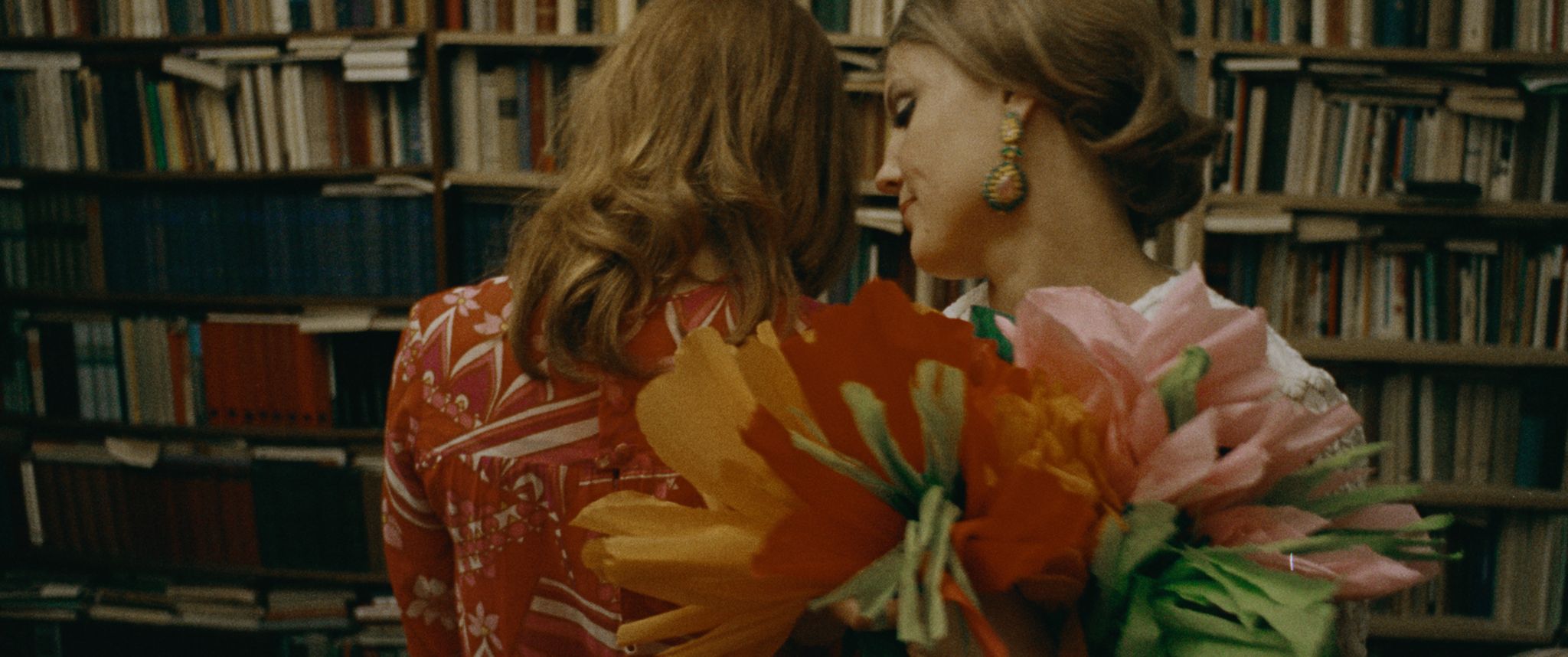The Cat Has Nine Lives. Directed by Ula Stöckl, Germany, 1968

Kanchi Wichmann is the writer-director of Break My Fall and Mixed Messages. Find her on Instagram @hotelkanchi.

Ula Stöckl’s impressively accomplished graduation film The Cat Has Nine Lives (1968) is generally regarded as Germany’s first feminist feature film, and earned her a rightful place in the New German Cinema movement. Now, fifty years after its bungled release left it languishing in the vaults, this landmark film, beautifully restored by the Deutsches Kinemathek, is available to modern fans of both political and experimental narrative cinema.
Using a mix of amateur and professional actors, scripted and improvised narrative and abstract sequences of striking visual symbolism, The Cat Has Nine Lives breezes through the lives, dreams and disappointments of five young women in 1960s West Germany. Stöckl’s unapologetically feminist politics and stark narrative devices nod to directors such as Varda, Akerman and Chytilová, whilst the art-direction, costumes and music tap into the giddy optimism of the time. As we watch the protagonists trying to find their voice in a society structured to silence them, Stöckl’s light touch and use of humour allow for moments of emotion and comedy and rescue the film from taking itself too seriously.
Successful journalist Katharina applies for an office job, ‘just to see if she can still get such a job without really trying,’ her rebellious French girlfriend Anne burns holes in her stockings with a cigarette whilst reading a yoga manual. Pop singer Gabriele comments that if Jesus had loved women she would love him too, whilst frustrated wife and mother Magdalena openly discusses masturbation at her parent and baby group. Meanwhile Kirke drifts in and out seeming only to come alive under the male gaze.
The meandering (and at-times confusing) narrative nonetheless speaks clearly to their predicament. As Stöckl saw it at the time:
women have never had so many chances to organise their lives the way they want. But first they have to learn that they can want something.
In Stöckl’s world women are comrades, soulmates, living and loving in glorious technicolour whilst men are bumbling fools, dressed in muted greys and browns and awkwardly trying to hang on to their sense of entitlement. As gratifying as it is to see this cinematic reversal of the cultural norms of the era, there are times when the film falls into the trap of reinforcing the very gender binary her characters seek to escape.
When Katharina and Anne cuddle up together, their hapless male companion insists he sit between them, declaring “I should get myself some reinforcements, you women are overpowering.” “That’s obvious,” is the giggling response. Modern audiences, though, may be disappointed that they make no move to stop him. As we witness the women’s struggle to find both autonomy and success, we also witness the ways in which they relinquish their power, not least by abandoning solidarity with each other against the ever-present need for male validation.
Whilst in some ways the film is clearly of its time, there is much to please and provoke modern day audiences. Thomas Schroder’s 1968 review in Die Welt claimed:
Her film centers on what is still socio-politically an explosive problem: the question of, to what extent a woman can be emancipated in a society which is ruled and organized by non-emancipated men.
And let’s face it, that dilemma still holds true today.
In places the film seems caught between telling it like it is and depicting a heady utopia of how things could be, perhaps reflecting a dilemma for female filmmakers at the time. However the film also feels surprisingly fresh, uplifting and even quietly revolutionary. In the words of German experimental filmmaker Ute Aurand:
an important and beautiful film, which was made at a time when women were just beginning to tell their own stories using their own pictures.

